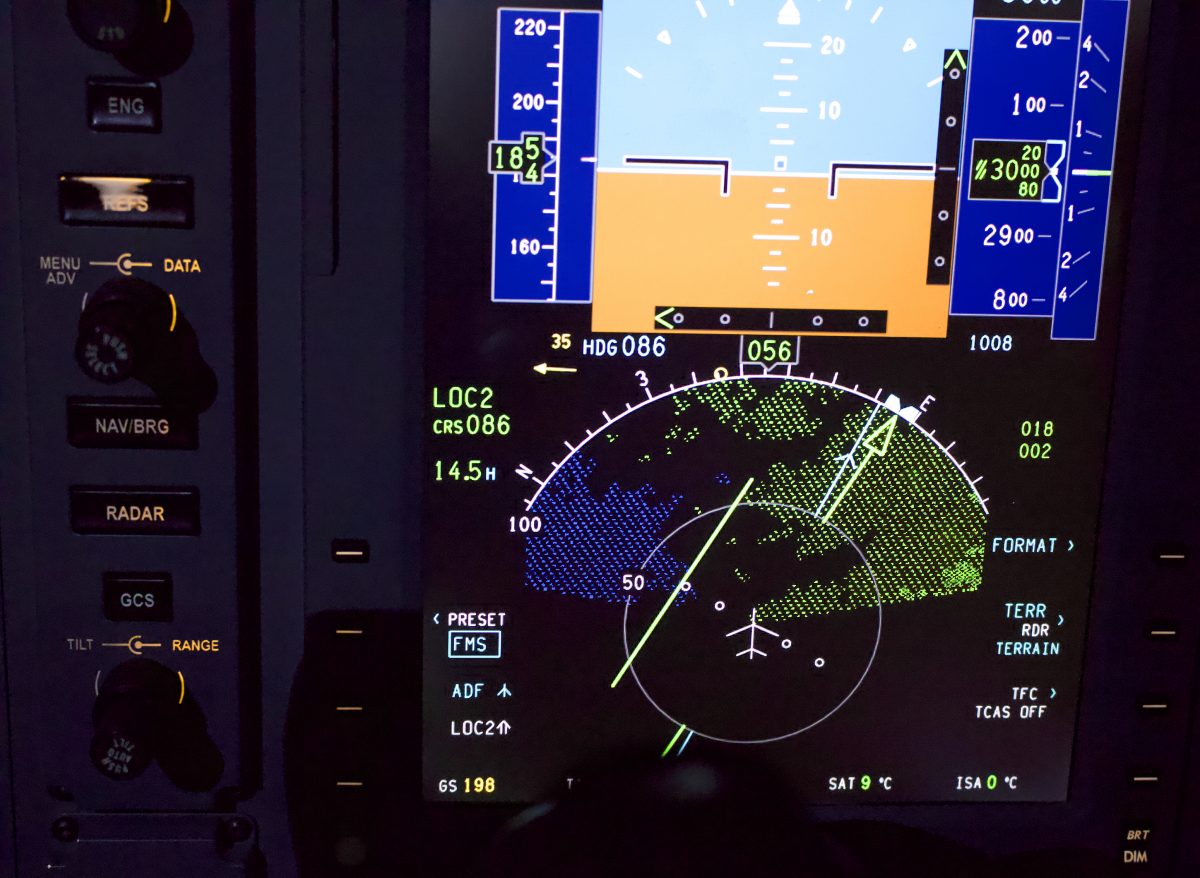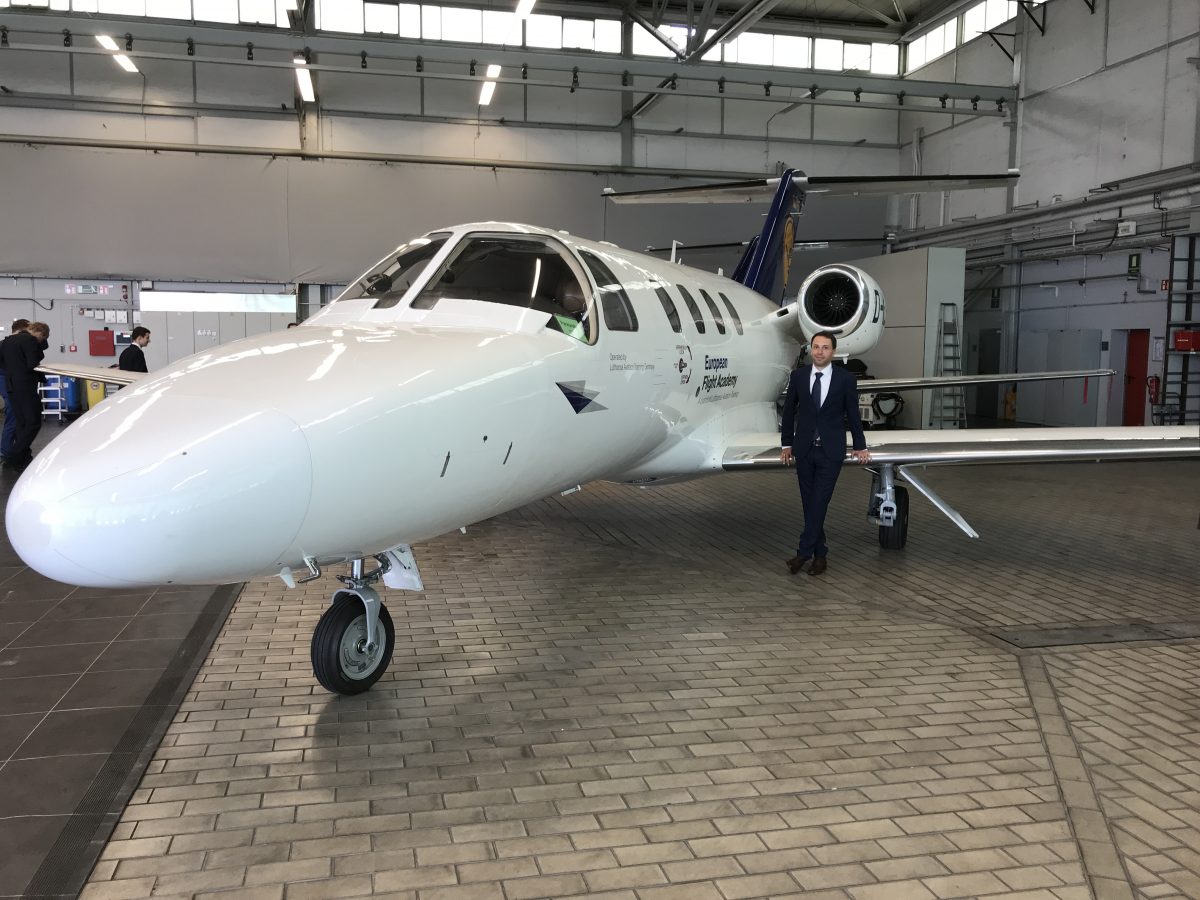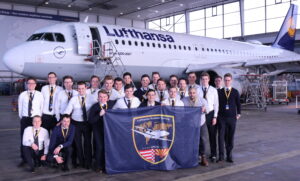Hello from Bremen,
I am Mikhail, 31 years old, and – as Matthias already mentioned – the “granddad” of class LHG 12 at the European Flight Academy.
In the name of LHG 12: Happy New Year to all of you!
It has been a while since our last post because we got our “Restricted Radio Telephony Certificate for Performing Radio Telephony” (BZF I) from the German Bundesnetzagentur shortly before the holidays. With this certificate, we are now authorized to use radio telephony in German and English according to visual flight rules.
You probably already read about “General Navigation” as well as the flight computer, so let’s continue with “Radio Navigation”. In “Radio Navigation”, we learn how antennas function and how radio waves spread out. We study different systems and how they help us navigate at high altitudes and in poor visibility. It includes those such as NDB and ADF, VOR, DME, MLS, and the best-known system: the instrument landing system (ILS). We are also introduced to radar systems and global satellite-based navigation systems such as GPS.
Several instruments are crucial to this class, even if we only learn about them in detail in another class, called “Instrumentation”. These are, for example, the Course Deviation Indicator (CDI) or the Horizontal Situation Indicator (HSI). The HSI, for example, can be found in digital form on one of our training aircraft, the Cessna Citation CJI+. You set the frequency of a station and the HSI then displays the current position of the aircraft. The same instrument can be used to get an ILS frequency signal.

As you can see in the picture, these displays are complex, which can be quite confusing at the beginning. Understanding how they work can be quite challenging, but with enough practice, you quickly get the hang of it. As in other subjects, basic technical knowledge can be an advantage but is not a prerequisite.
Now we enter the crunch phase before the first our first round of tests, with “Radio Navigation” also one of our examination subjects. At the end of January, we will complete our core phase and start preparing for our second round of tests and the ATPL examination at the German civil aviation authority (Luftfahrtbundesamt).

We hope that each of our blog posts gives you a bit more insight into pilot training at European Flight Academy, and that you’re curious enough to want to experience it for yourself!
See you soon in Bremen, I hope!
Greetings,
Mikhail



